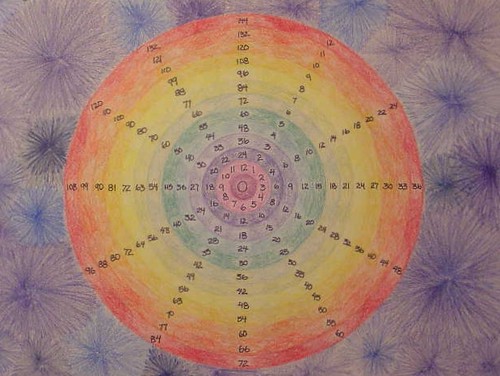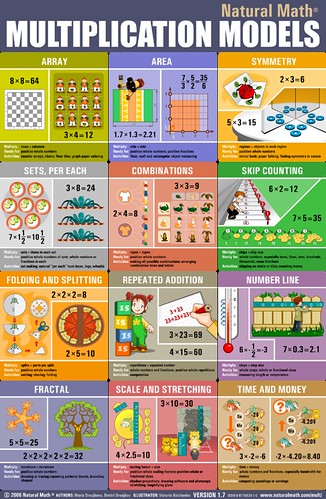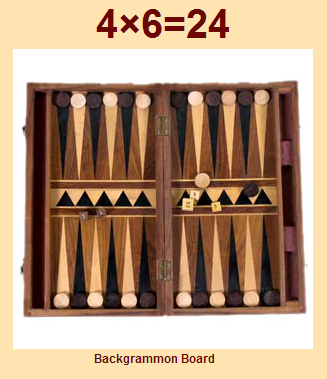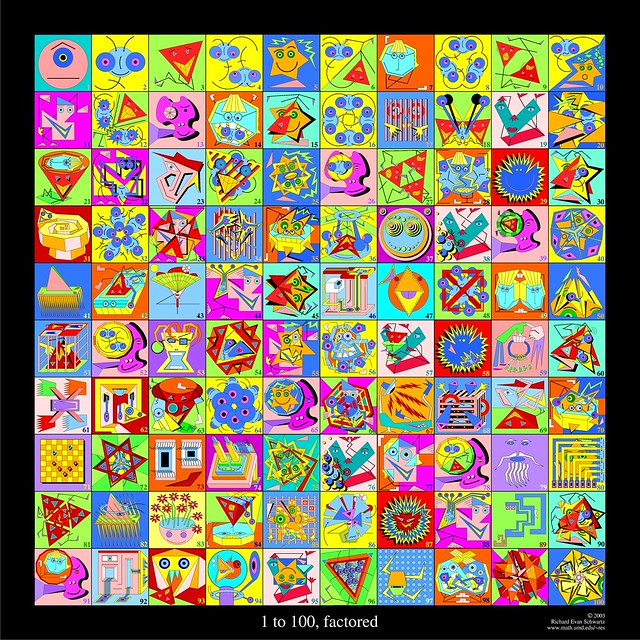6 ways to collect multiplication pictures
1. Collect pictures of times table facts for a poster

2. Put pictures in Robinsunne’s multiplication clock

3. Collect from the same context, theme, or story
Animal legs for x2? What multiplication can you find in Star Wars, Harry Potter, or Minecraft?

4. Find examples of as many models as you can
Larger pictures of models are here.

5. Collect iconic examples
Iconic multiplication is easy to recognize, such as 8×8 for chessboard or 2×5 for fingers on hands. The backgammon board always stands for 4×6 and can’t have another combination of circles.

6. Make factorization diagram posters
Sources: Count on Monsters and Math Less Traveled.

Posted in Grow
4 comments on “6 ways to collect multiplication pictures”
Leave a Reply Cancel reply
This site uses Akismet to reduce spam. Learn how your comment data is processed.
MATH ADVENTURES BY EMAIL
Activities, courses, books, and games by and for the Natural Math community.
Books and Goods
Follow
Search
Recent Posts
- Math Maker News: Modultown! by Dec 1, zoo puzzle-hunt, and Future Book Club volunteering November 28, 2025
- A Heart That Continually Grows Forever or Infinitely April 16, 2025
- Summer camps with Pomo and Navajo math friends: June 2024 news July 10, 2024
- Book Clubs and Community-Responsive Math Circles February 7, 2024
- Spring 2023 at FUNDAPROMAT: Calculus for 5-Year-Olds Materials May 14, 2023








Hi Maria,
I am a homeschool mom of 4 who happened to study math in college, then, when we started looking for books to use for homeschool, about 14 years ago, started studying math,again, as I was teaching my children, using I think what they call “Living books”- books about math, written by mathematicians and/or math professors, among many other books that were more traditional math books. I also used my own knowledge to help them along with their math studies.
So, I am delighted to find that you have listed 2 math professors, Richard Evan Schwartz and Brent Yorgey who both seem very good at connecting elementary arithmetic with higher mathematics in such a delightful way.
I am going to start following your blog and “The Road Less Traveled” blog by Professor Yorgey. I am also checking out Richard Schwartz’s book from the library.
Awhile back, I saw the “Count On Monsters” poster in a book by Joy Hakim titled “The Story of Science: Aristotle Leads the Way”, in regards to the prime numbers.
I am so happy to see you connecting multiplication with prime numbers, factors and some other topics that seem to be ignored by elementary math curriculum, or categorized as “enrichment or gifted math”.
Thank you for the links to the factorization diagram posters.
Kim,
Thank you for your kind words, and sharing your journey! Living Math might be the book collection you are thinking about – if so, I am a fan as well.
Do you have other favorites about multiplication? Or other math adventures to share? I love to hear what people are doing at home.
Theoni Pappas books, “The Adventures of Penrose the Mathematical Cat” series is one of our favorites.
Also, we like Harold R. Jacobs textbooks.
I first saw both of these authors on the Family Unschooling Network webpage.
Thank you! Our book on multiplication is coming out (hopefully) this year, so I may assemble a list of recommendations “if you like this, there’s more out there”.
If you do a math making project, drop me a line please – maybe we can feature it here on the blog?